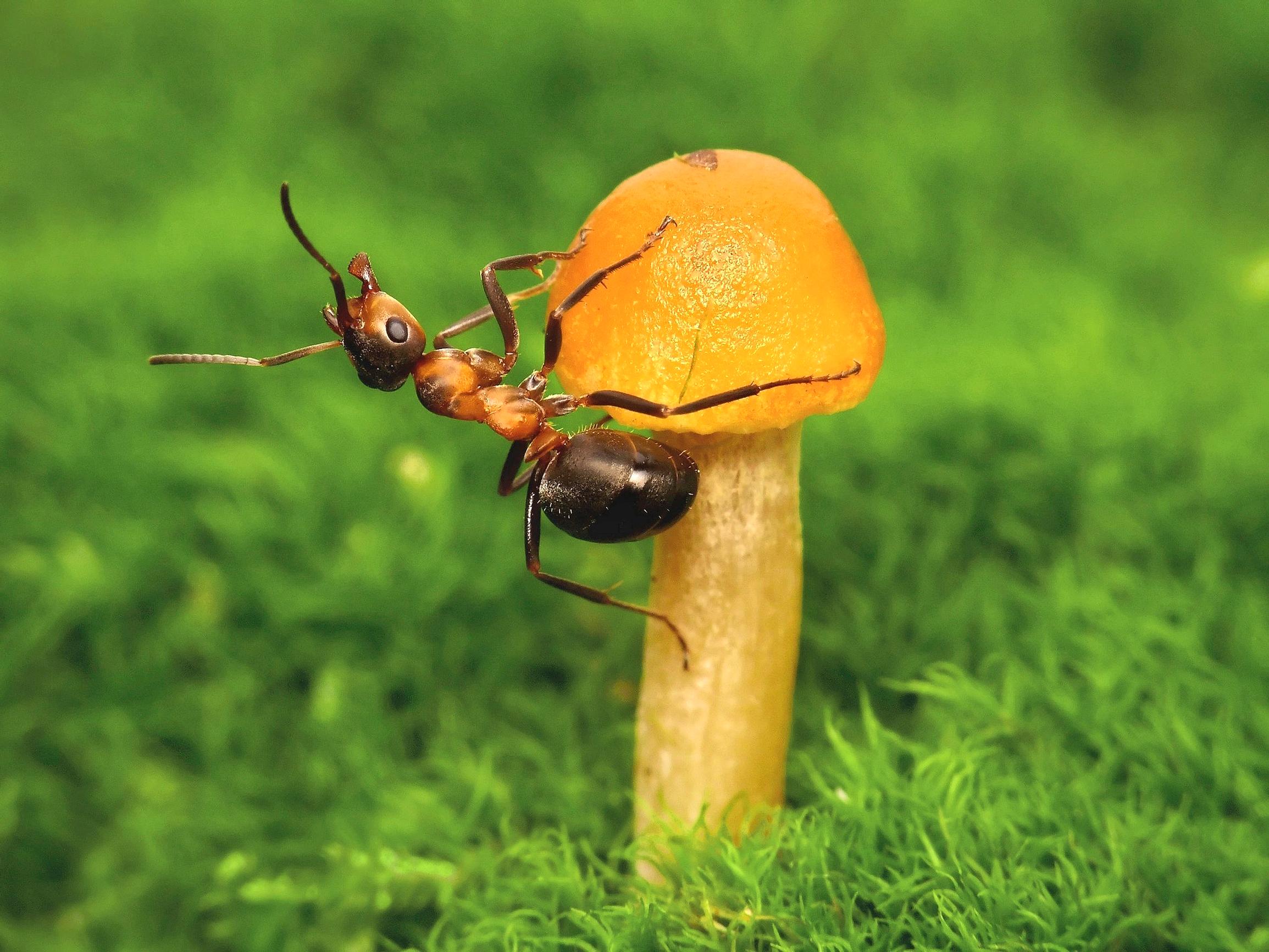
Don’t destroy ants out of habit: nature’s pest controllers against ticks and other garden pests
Finland is home to about sixty species of ants, none of which are dangerous to humans. However, a few, such as the wood-boring carpenter ant and the persistent pharaoh ant, can be problematic. Learn about the seven most common ant species in Finland!
Ants nesting in cottage yards can almost always be eradicated with bait granules. These granules contain poisonous substances that ants unknowingly carry back to their nests for the colony to eat. Ensure that you scatter the bait granules in places where children or pets cannot reach them.
However, you shouldn’t destroy ant colonies without reason. Ants are highly effective at controlling pests in both forests and cottage yards. Notably, ants include the notorious tick in their diet.
Ants live in large colonies, with the most impressive nests belonging to mound ants. These nests can reach over two meters in height, and they extend about half a meter below ground, housing up to a million ants.
Ant colonies are composed of queens, males, and workers. The worker ants, which are always female, are the most numerous. Each summer, the queens and males of various species grow wings and embark on a nuptial flight to reproduce. Flying ants are therefore not a separate species.
The timing of these swarming flights varies by species and lasts only a few days. After mating, the fertilized queens establish new nests, while the males, having fulfilled their role, die shortly after mating.
Did you know that ants include ticks in their diet?
Harmful ant species
Carpenter ant
The carpenter ant is the largest ant species in Europe, reaching up to two centimeters in length. It destroys wooden structures by carving tunnels, but it does not consume the wood like some larvae. The workers are reddish-brown, and the larger queen is almost black. To eliminate carpenter ants, the queen must be located and destroyed. Insecticides are sprayed into the tunnels, and then it’s a matter of waiting and hoping for the best. It might also be necessary to ask for professional help.

Pharaoh ant
This small tropical ant species invades pantries after feeding on animal carcasses, potentially spreading bacterial diseases. It requires a constant temperature above 18 degrees Celsius to reproduce, which typically prevents it from settling in cottages that are kept cold after summer.
Common red ant
Known as the ‘piss ant’ in Finnish, the common red ant aggressively defends its nest and uses its venomous sting readily. The sting is similar to a wasp sting, resulting in a bump akin to a mosquito bite. Ant granules can eradicate them once you locate the nest, which is typically under a large stone or inside a fallen tree trunk.
Black garden ant
Often referred to as ‘sugar ants’ in Finnish, black garden ants do not cause significant harm but can invade homes in search of sweet foods. At the cottage, it’s advisable to store sugar-containing items in airtight containers. These ants can nest in the foundations of cottages, and to eradicate them, you need to destroy the nest. The queen can live up to 30 years.
Beneficial or harmless ant species
Scottish wood ant
The Scottish wood ant is the most common mound-building ant. While it can be annoying, it is not harmful. When disturbed, it may bite, but bite feels only like a small pinch. If their presence bothers you, you can relocate the nest further from the yard. Although it cannot be moved intact, the nest has sufficient workers for a new construction project. You should not destroy the nest, as mound ants help control pests.
Yellow meadow ant
The yellow meadow ant, resembling a common red ant, is relatively harmless. It keeps root aphids as ‘livestock’ and feeds on their excretions, honeydew. A small mound, the colony’s ‘landfill,’ may form above the underground nest. Yellow meadow ants are primarily seen above ground during their swarming season in August.
Silky ant
One of the most common ant species, silky ants do not bite, damage wooden structures, or spread diseases. About half a centimeter long. They may enter homes in spring in search of food.
Old traditional methods to deter ants
- In late fall, insert an iron rod into the underground ant nest. The cold conducted by the iron can kill the ants during winter frosts.
- Mix soap or salt into nearly boiling water and pour the solution into the nest.
- Various substances are recommended for sprinkling on ant paths, including baking soda, slaked lime, salt, cinnamon, and coffee grounds, though their effectiveness is debated.
- Tar and cat urine are also suggested for blocking pathways.
- According to some beliefs, planting strongly fragrant marigolds by the cottage wall can repel not only ants but also snails. Dried marigolds can be sprinkled on ant paths.


